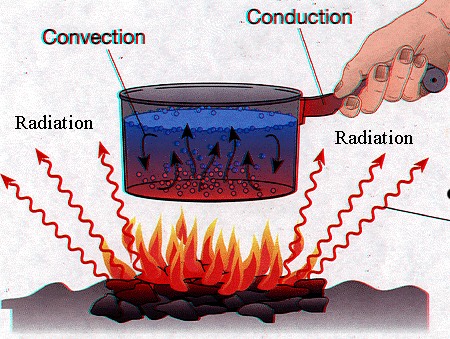~aalopez/aos101/wk5.html

Now that we know how pressure makes a
popcorn kernel pop, we need to look at how exactly the
popcorn kernels are heated in order to raise their
temperature. According to the Merriam-Webster online
dictionary the definition of heat is, “Energy transferred from one body to another
as the result of a difference in temperature.” (“Heat”). By looking at all three of
our different methods of popping it can be seen that
energy is transferred from the air popper, stove top and
fire to the popcorn kernels. Now we need to look at the
different methods of energy transfer; there are three main
ways energy is transferred which are conduction,
convection, and radiation. A good visualization of these
three types is shown in the image on the left. Conduction
occurs when two things are in contact with each other,
like the person’s hand and the pot handle. Convection, one
of the quickest methods of energy transfer, occurs when
heat is transferred through a fluid. This is shown taking
place inside the pot in the water. Finally, radiation is
the process in which electromagnetic waves travel and when
they hit things convert to heat. Radiation is shown coming
from the fire under the pot. One last thing before we
continue this discussion is defining the properties of a
fluid. Two main properties of a fluid is that it does not
resist deformation (or only slightly) and it has the
ability to flow. This means that water, oil, and even
different gasses are fluids.